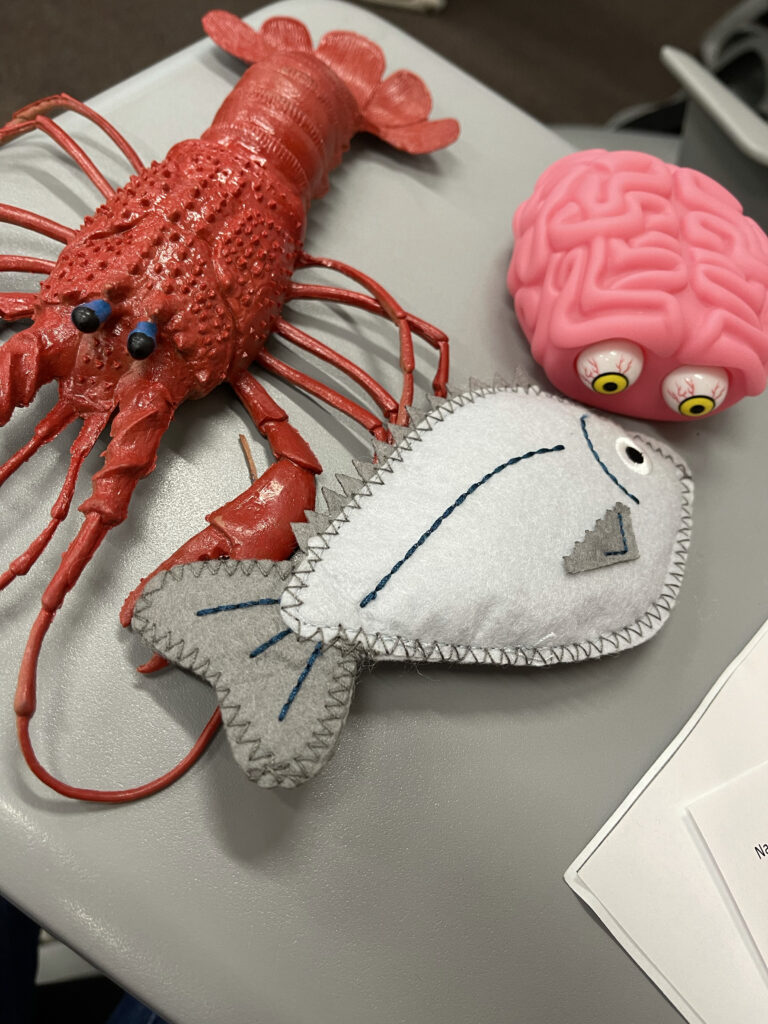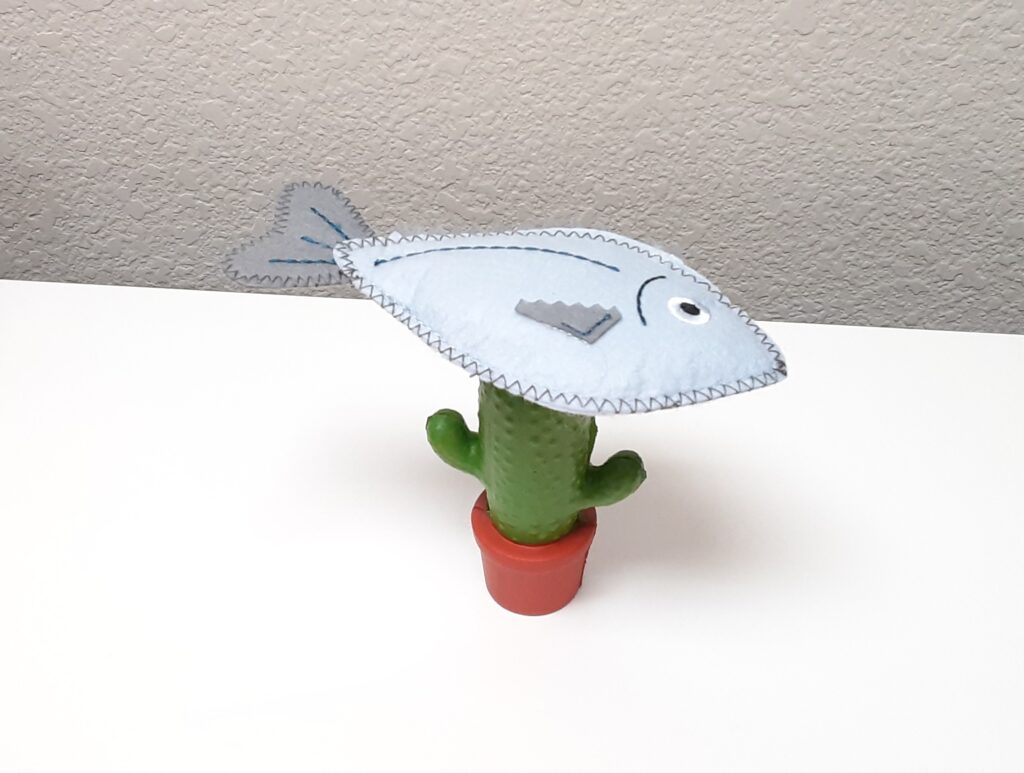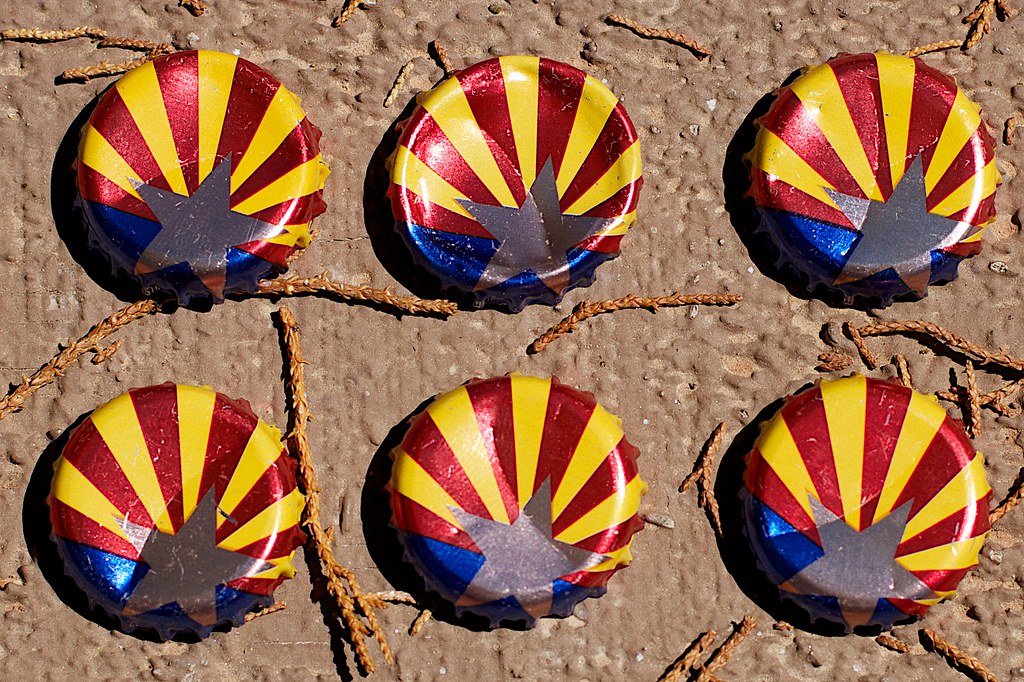What do these sentences have in common?
The horseshoe is between the dice.
The lobster is next to the brain.
The fish is on the cactus.
Yes, you’re right: they all contain prepositions (between, next to, on).
I’m the kind of person who’s by nature attracted to novel and kitschy things (yes, I had to depend on spellcheck to spell kitschy correctly). Normally, this predilection is kind of shunned by society (“He’s one of those Pee Wee Herman-types who has a singing bass hanging in his living room.”)
But as an ESL (English as a Second Language) instructor, items like a plastic toy lobster, a cactus squeeze toy, and a Hoberman Sphere come in handy in the classroom.
You see, for new English language learners, one of the most challenging aspects is using prepositions correctly. (“My birthday is in January 12th.” “She works on Wal-Mart.”)
Unfortunately, I have found that ESL textbooks and lessons often use bland examples that many students see over and over:
The pencil is on the table.
The apple is on the plate.
Students: “Yawn.”
Instructor: “Yawn.”
After seeing a pencil on a table for the billionth time, I recently decided to rummage through my collection of oddball/somewhat-oddball items, such as a brain squeeze toy, a rubber scorpion, some toy fish, a horseshoe, a cactus squeeze toy, and a Hoberman sphere.
I brought the items into the classroom and my level one students practiced using prepositions with them. They arranged the items and created sentences such as:
The cactus is on the fish.
The sphere is next to the horseshoe.
The scorpion is under the brain.
I also encouraged them to take photos and send them to me to post in Canvas.
Will using odd items like these help them learn English? Some research has shown that novelty might help with memory; other research has suggested that it might not. But either way, one thing’s for sure: it engaged them and allowed them to learn and practice new vocabulary beyond pencil and apple.
My students may never actually see a fish on a cactus in real life, but if they ever do, they can confidently say, “Hey look…! There’s a fish on a cactus!”









